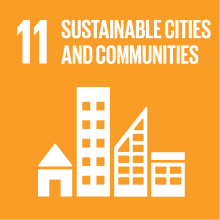ARCHITECTURE OF PUBLIC SPACES
- Academic year
- 2025/2026 Syllabus of previous years
- Official course title
- ARCHITECTURE OF PUBLIC SPACES
- Course code
- EM3A19 (AF:576530 AR:323532)
- Teaching language
- English
- Modality
- On campus classes
- ECTS credits
- 6
- Degree level
- Master's Degree Programme (DM270)
- Academic Discipline
- ICAR/18
- Period
- 2nd Term
- Course year
- 2
- Moodle
- Go to Moodle page
Contribution of the course to the overall degree programme goals
The course aims to provide students with a detailed knowledge of forms and functions of the main public spaces within the city, being them both outdoor public urban space, and indoor space in public buildings. Lectures approach the topic multidisciplinary and at different scales, dealing with aspects of architectural and urban history, town planning, architecture of gardens, art history, museum studies, curatorship, sociology, governance of territory and management of cultural institutions. After a brief introductory historical presentation, the course focuses on the most significant contemporary phenomena related to public space.
Expected learning outcomes
- Knowledge and comprehension: knowing the different forms of public space and the institutions that manage them, understanding the various natures and multiple functions of public space, as well as their historical origins.
- Analysis and discernment: identifying diverse aspects of architecture and use of public spaces through critical analysis, bibliographical research and on-site investigation, evaluating potentials of public space and consequently envisioning the best practices for its improvement.
- Assessment skills: discussing case studies of public space critically, showing originality and independence in the assessment and critical argument, formulating thoughtful and motivated judgements.
- Communication: presenting to peers the contents of a personal research in clear and effective way, with proper arguments and the due terminology, debating in questions and answer sessions.
Pre-requirements
Contents
Monographic lectures present single topics and aspects of public space in both a theoretical discourse and the analysis of several significant case studies. The content of monographic lecture encompass, but are not limited to:
- Different definitions of public space;
- A brief history of public space;
- What is public space;
- Ideas of public space in different countries and cultures;
- Public space and cultural values (identity);
- The unbuilt space: squares and streets;
- Public parks and gardens;
- Public space in public buildings;
- Private space with public access.
On the other hand, keynote presentations aims to introduce students in a more practical dimensions, giving the peculiar viewpoints of different professionals working in and with public space. Professionals include artists, architects, town planners, museum directors, exhibition curators, sociologists, and organisers of public events.
Referral texts
For an introduction to the topic of the course, see:
Pietro Garau, Lucia Lancerin, Marichela Sepe, "The Charter of Public Space", Rovereto: List, 2015 (https://inu.it/wp-content/uploads/Inglese_CHARTER_OF_PUBLIC_SPACE.pdf );
Franco Purini, "Spazio pubblico", entry in Enciclopedia italiana, VII Appendice, Rome: Treccani, 2007 (https://www.treccani.it/enciclopedia/spazio-pubblico_(Enciclopedia-Italiana )/).
Assessment methods
The research topic must be approved by the teacher. It can be an accessible public space in Venice or other locations. Students must be able to visit the public space under investigation, take pictures and analyse the architecture and study the urban phenomena. Then they have to investigate the historical origins of that public space, its main functions in past and present, and how it was physically and functionally transformer over time. Finally, they must envision the organisation of an event to take place in the chose public space, and justify it on the basis of the aforementioned analysis.
Type of exam
Grading scale
Knowledge and comprehension: 18-22, poor; 23-26, satisfactory; 27-29, good; 30 or 30 e lode, excellent.
Interpretation of phenomena and criticism: 18-22, poor; 23-26, satisfactory; 27-29, good; 30 or 30 e lode, excellent.
Communication and technical language: 18-22, poor; 23-26, satisfactory; 27-29, good; 30 or 30 e lode, excellent.
Teaching methods
In addition to the teacher's lectures, keynote presentations by expert professionals (such as artists, architects, town planners, sociologists, museum directors) are scheduled during the course, providing the students with the different viewpoints of those who actually work in and with the public space.
Further information
The course programme and the assessment methods are the same for attending and non-attending students. Students are required to communicate to the teacher in the due time the research topic they intend to present in the exam day. The teacher is available during the office hours, before and after the lectures in the classroom, and via email.
Ca' Foscari University applies Italian Law (Law 17/1999 and Law 170/2010) for the support and accommodation services available to students with disabilities or specific learning disorders. Students with motor, visual, hearing, or other disabilities (Law 17/1999) or a specific learning disorders (Law 170/2010) can request support (classroom assistance, technological aids for exams or individualized exams, accessible format materials, note-taking assistance, specialized study tutoring, interpreters, or other services), by contacting the Disabilità e DSA office: disabilita@unive.it.
2030 Agenda for Sustainable Development Goals
This subject deals with topics related to the macro-area "Cities, infrastructure and social capital" and contributes to the achievement of one or more goals of U. N. Agenda for Sustainable Development


